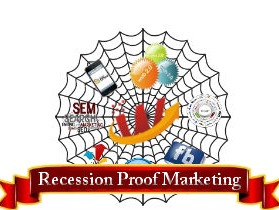
The Rise and Fall of Programmatic SEO
In the ever-changing world of SEO, strategies that once seemed foolproof can quickly lead to dire consequences. For one company founder, the reliance on programmatic SEO (often referred to as pSEO) seemed like a shortcut to success—until it wasn’t. As outlined in a recent LinkedIn post, this approach led to their site getting deindexed by Google due to poor content quality, a situation that serves as a cautionary tale for digital marketers everywhere.
What Went Wrong with Programmatic SEO?
Initially, the company's foray into pSEO appeared promising. They generated a staggering fifty thousand pages targeting long-tail keywords, which resulted in hundreds of clicks and millions of impressions. However, the joy was short-lived. The site faced a rapid decline in traffic as Google flagged them for thin content. Thin content, whether generated by AI or not, can trigger automatic penalties from search engine algorithms, especially if it lacks depth, uniqueness, or relevance to a user's intent.
Lessons Learned: Quality Over Quantity
The founder, Miquel Palet, reflected on their experience, stating, "We learned the hard way that shortcuts don’t scale sustainably." This insight is critical for anyone in the digital marketing space. Quality should always take precedence over quantity. While automated tools can facilitate content creation, the end product still needs to add genuine value to the user.
Experts Weigh In: Navigating pSEO Risks
Digital marketers have increasingly debated the merits and pitfalls of programmatic SEO. Rasmus Sørensen, another industry expert, pointed out that many have misused pSEO tactics, resulting in a saturation of subpar content. In his words: "Programmatic SEO had been touted as the next best thing in SEO. It’s not, and I’ve seen so much garbage published in the last few months." This sentiment reflects a growing skepticism among seasoned professionals about the efficacy of these tactics if not done correctly.
Turning Around the Ship: What They Did to Restore Their Ranking
After facing severe repercussions due to their initial strategy, the company took decisive steps to pivot and recover. They rebranded the site, adopting a new domain and redirecting the former URL to focus on high-quality content tailored to the needs of their audience. The principle behind this strategy was simple: less content but with significantly more quality. This move not only improved user engagement but also showed positive signals to Google, indicating that the site was back on the right track.
The Road Ahead: Future Implications for Programmatic SEO
While the journey of this company serves as a cautionary tale, it also opens up avenues for future exploration. Programmatic SEO can be beneficial for scaling certain content activities, but it comes with substantial risks if not approached wisely. Industry experts advocate for its use only under the guidance of experienced SEO professionals, ensuring that quality is never compromised for the sake of expediency. Properly implemented, pSEO has potential, but understanding where to draw the line is critical.
Conclusion: Avoiding Common Pitfalls
The narrative of this company's experience illustrates the importance of maintaining high content standards in any SEO strategy. As digital landscapes evolve, the key takeaway remains: prioritize quality over quantity to ensure sustainable success in search engine rankings. With the appropriate balance, programmatic SEO can still be a valuable tool in the arsenal of modern digital marketing.
 Add Row
Add Row  Add
Add 




Write A Comment